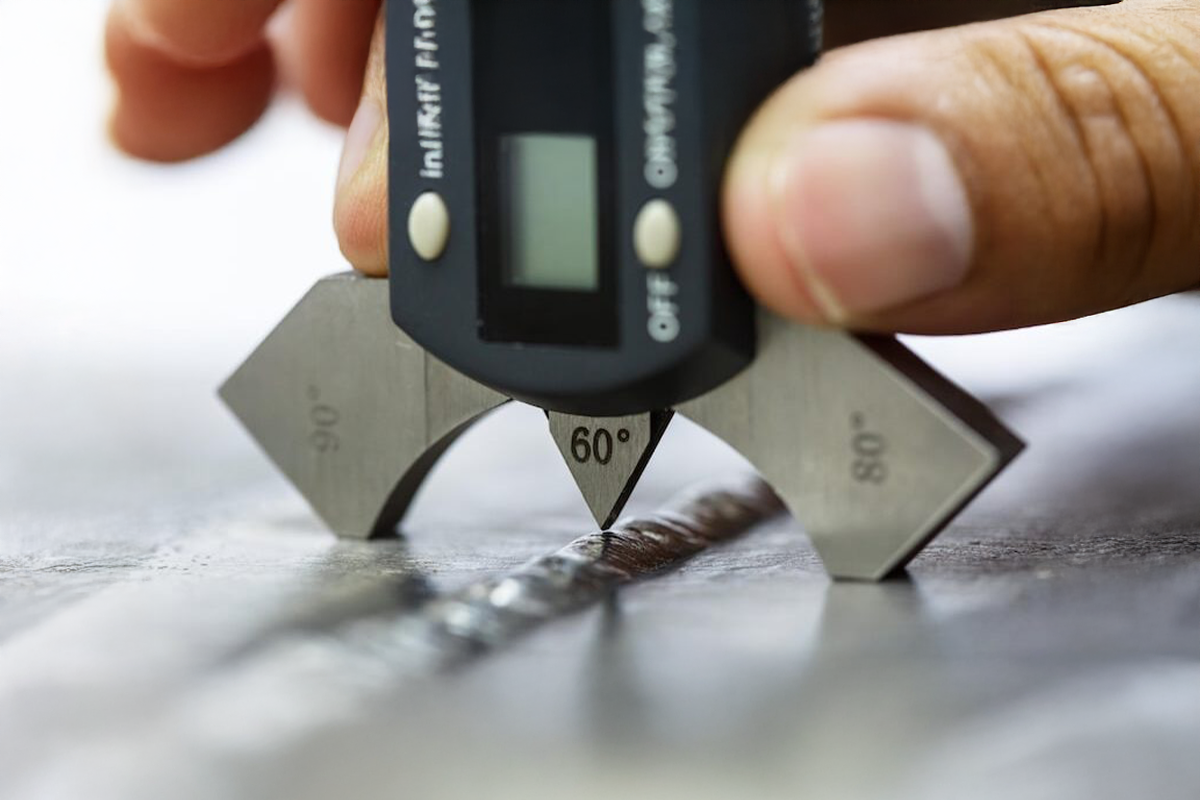Your cart is currently empty!


Visual inspection of welds – acute vision test considerations
The role of visual inspection is well defined in the standards framework, such as AS/NZS 5131, AS/NZS ISO 3834, and AS/NZS 1554.1.
However, there have been some questions about the qualification of welding inspectors and the requirements for near-vision acuity tests.
First-party vs. third-party inspection and reporting
There is a distinction between in-house (first party) visual inspection and documentation required by AS/NZS ISO 3834.2 as part of the fabrication process and a third-party inspection required by the construction specification.
AS/NZS 5131 does not specify whether first, second, or third-party visual examination is required. It is a contractual matter.
To clarify the matter, the Steel Fabrication Certification (SFC) Rules include the following recommendations:
For “In-house” (first-party) visual inspection performed as part of the fabrication process to the requirements of AS/NZS 5131 and AS/NZS 3834.2. Personnel shall have at least the qualification of a welding supervisor to AS/NZS 2214. Note that while these inspections are reported in the fabricator’s quality records, this is not considered a formal inspection to AS/NZS ISO 17637.
For visual inspection to AS/NZS ISO 17637 and/or AS 3978 including “Inspection after welding” (Ref. AS/NZS 5131 Section 13.6.2). Inspection to AS/NZS ISO 17637 and AS 3978 includes any specific visual inspection requirements in the construction specification that require a formal inspection report for the client and/or design engineer.
Any of the following is an acceptable qualification:
- The HERA Welding Inspector Level 1 including Certificate in Proficiency in Visual Testing of Welded Joints to AS/NZS ISO 17637:2019.
- AS2214.1 Welding Inspector – Steel Structures.
- International Institute of Welding diploma as an IIW Welding Inspector IWI-B or higher.
- A Certification Board of Inspection Personnel (CBIP) New Zealand Certified Welding Inspector.
The welding Inspector should complete an annual eye examination to meet the visual acuity requirements of their qualification.
Annual eye test and qualification for visual inspection
According to AS/NZS ISO 9712:2023 Section 7.4, personnel involved in Non-Destructive Testing (NDT) qualification and certification are required to undergo an eye test. However, this requirement is not mandated in AS/NZS ISO 17637:2016 – Non-Destructive Testing of Welds – Visual Testing of Fusion-Welded Joints (Section 5 – Personnel Qualification). Instead, ISO 17637 recommends that the person responsible for visual inspection be qualified to ISO 9712 while emphasising the need for a qualified and capable individual.
Similarly, AS 3978 Section 4 (footnotes) outlines inspector requirements, stating that qualifications normally accepted for visual inspection include AINDT AS 3998 or other equivalent qualifications such as ISO 9712, along with practical experience in an appropriate environment (AS 3978 Section 4(b)).
This distinction has led to some confusion regarding what constitutes a “qualified and competent” visual inspector, as visual inspection requirements differ from other NDT methods. The lack of a unified qualification process has raised concerns about how to assess an inspector’s capability and experience in the sector.
Project-specific requirements and structural steel standards
The level of visual inspection required depends on the project specification and sector. Under the SFC, AS/NZS 5131 CC3 and ISO 3834.2 system, the quantity of in-house Visual Scanning (VS) shall be 100%, supplemented by Visual Testing/Examination (VT/VE) per AS/NZS 5131 Table I6 or Table 13.6.2.2(A). This VT can be performed by an AS/NZS 2214 Welding Supervisor, provided they have appropriate training and experience in welding inspection.
However, the project specification may include additional VT levels or first, second, or third-party inspection requirements. In some cases, first-party VT may be accepted in place of second or third-party VT, but this is a contractual issue that should be resolved before work begins.
For the structural sector, visual inspection is governed by five key standards:
- AS/NZS 5131 – overarching standard;
- AS/NZS 1554 – welding standard;
- AS/NZS ISO 3834 – quality requirements for fusion welding;
- AS 3978 – previously used and reconfirmed in 2022 and still current; and
- AS/NZS ISO 17637 – current standard which may replace AS 3978 in the future.
These standards were developed at different times and by different committees, leading to inconsistencies in qualification and inspection requirements. AS/NZS 5131 serves as the higher-level overarching standard for structural welding inspection.
Recommended action and eye test requirements
For visual inspection to AS/NZS ISO 17637 and/or AS 3978 including “Inspection after welding” (Ref. AS/NZS 5131 Section 13.6.2), the welding Inspector should complete an annual eye examination following AS/NZS ISO 9712.AS/NZS ISO 9712 Section 7.4.2, which refers to ISO 18490, specifies the following near vision requirements:
- the ability to read Jaeger number 1, Times Roman N 4.5, or equivalent letters (1.6 mm height) at a minimum distance of 30 cm, with or without corrective eyewear; and
- the use of corrective lenses must be recorded in the report for one or both eyes;
Additionally, AS/NZS ISO 9712 Section 7.4.3 outlines colour vision requirements as the ability to distinguish contrasts between colours or shades of grey relevant to the specific NDT method.
Ensure your inspectors meet VT/VE requirements!
HERA’s Welding Inspector training offers industry-recognised certification, ensuring inspectors meet the competency requirements set out in industry standards and the latest SFC Scheme Manual.
For further details and the training schedule, please refer to the article link below: HERA Notice – New Standard for Welding Supervisors and Inspectors AS 2214.1.
Need more information?
Please refer to the following documentation below:
AS/NZS 5131: Structural steelwork – Fabrication and erection
AS/NZS 1554: Structural steel welding
AS/NZS ISO 3834: Quality requirements for fusion welding of metallic materials
AS 3978: Non-destructive testing – Visual inspection of metal products and components
AS/NZS ISO 17637: Non-destructive testing of welds – Visual testing of fusion-welded joints
ISO 18490:2015: Non-destructive testing – Evaluation of vision acuity of NDT personnel
